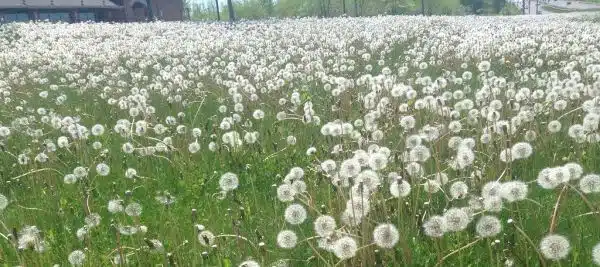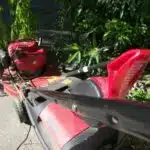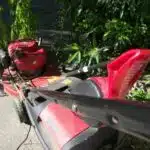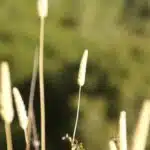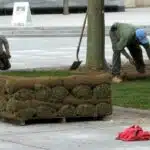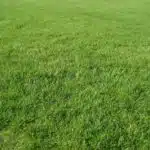Establishing a healthy and beautiful lawn requires patience, time, and effort. One of the most critical steps in creating a lush green lawn is seeding it from scratch. Whether you are starting from bare soil or trying to improve an existing lawn, proper seeding techniques can help ensure a successful outcome.
To seed a lawn from scratch, several factors must be considered, including climate conditions, soil type, seed selection, and maintenance practices. A well-constructed plan that takes into account all these factors will lead to a robust and vibrant lawn that enhances the aesthetic appeal of your property. In this article, we will discuss the essential steps involved in seeding a lawn from scratch and provide valuable tips on how to establish and maintain a flourishing turfgrass bed. With our guidance and expertise in lawn care, you can achieve your dream of having an enviable green space that adds value to your home.
Evaluating Soil Conditions
Assessing the soil conditions is imperative in preparing for seeding a lawn from scratch. Soil testing will reveal the nutrient deficiencies and the pH levels that may hinder seed germination. By checking the soil’s composition, lawn care enthusiasts can determine if some amendments are necessary before planting.
Nutrient deficiencies in the soil can cause weak plant growth, yellowing of leaves, and even death of young plants. Nitrogen deficiency results in stunted growth and yellowing of leaves. Phosphorus deficiency leads to poor root development and delayed maturity. Potassium deficiency results in stunted growth and brown edges on leaves. Therefore, it’s important to understand what type of nutrients are missing from your soil so that you can address them immediately.
Soil testing kits are readily available at garden centers or online stores, making it easy for homeowners to test their soil at home. The pH level should also be tested as this affects how well plants absorb nutrients from the soil. Ideally, a pH range of 6 to 7 is recommended for growing most grass types. Knowing your soil condition is crucial in ensuring a healthy and green lawn; thus, taking time to assess it before seeding is worth it. With an understanding of your soil condition, you can proceed to remove existing vegetation to prepare your lawn for seeding.
Removing Existing Vegetation
Imagine you are standing in a field of tall grass and weeds, the sun beating down on your back. You want to transform this unkempt space into a lush green lawn, but where do you begin? The first step in seeding a lawn from scratch is to clear away any existing vegetation. This will give the new grass seedlings the best chance of success by removing competition for water and nutrients.
There are two methods for clearing debris: chemical and manual. Chemical methods involve using herbicides to kill off existing vegetation, while manual methods involve physically digging up or mowing down the plants. Both have their advantages and disadvantages, so it’s important to choose the method that best suits your needs.
Once you’ve cleared away any unwanted vegetation, it’s time to prepare the soil for seeding. This involves several techniques that will help create an ideal growing environment for your new lawn. By taking the time to properly prepare the soil, you’ll give your grass seedlings the best chance of growing strong and healthy.
- Soil testing: Before beginning any soil preparation techniques, it’s important to test your soil to determine what nutrients it may be lacking.
- Aeration: Aerating involves puncturing small holes in the soil to allow air, water, and nutrients to penetrate deep into the ground.
- Fertilization: Adding fertilizer provides essential nutrients that promote healthy growth and development.
- Leveling: Leveling out any uneven spots in your lawn will prevent areas of standing water and improve overall appearance.
- Raking: Raking helps break up clumps of soil and removes any remaining debris from clearing away existing vegetation.
By following these steps, you can ensure that your newly seeded lawn has optimal growing conditions. In order to achieve a healthy and thriving lawn, it’s important not to skip over any of these crucial steps in preparation. Next up, we’ll discuss some additional techniques for preparing your soil before seeding.
Soil Preparation Techniques
- Testing the soil pH is essential when preparing a lawn from scratch, as it is an important factor in determining the nutrient availability in the soil.
- Improving the soil structure is important for allowing water and air to penetrate the soil, and for enabling root growth to support healthy grass growth.
- Adding nutrients to the soil is important for providing essential elements for healthy grass growth, such as nitrogen, phosphorus, and potassium.
- Before adding any amendments to the soil, it is important to first test the soil pH level, as it can impact the availability of these nutrients.
- Once the soil pH has been tested and the soil has been improved, the next step is to add the appropriate amount of fertilizer.
- Adding a slow-release fertilizer is recommended, as it will provide the grass with the nutrients it needs to grow over a period of time.
Testing Soil Ph
Before seeding a new lawn, it is essential to test the soil pH to determine its acidity or alkalinity. Soil testing methods involve collecting soil samples and sending them to a laboratory for analysis. It is recommended to test the soil at least six months before planting, as it takes time to adjust the pH level.
Interpreting test results is crucial in determining how much lime or sulfur should be added to adjust the pH of the soil. A pH level between 6.0 and 7.0 is ideal for growing most types of grasses. If the pH is too low (acidic), adding lime will help raise it, while sulfur can be used if the soil is too alkaline.
Testing soil pH may seem like an insignificant step in lawn preparation, but neglecting this process can lead to poor growth and unhealthy turf. By following proper soil testing methods and interpreting test results accurately, you can ensure that your lawn has a healthy foundation for growth and success.
Improving Soil Structure
After determining the soil pH, the next step in preparing a lawn is to improve the soil structure. The soil’s structure refers to its ability to hold water, air, and nutrients. Soil with poor structure leads to compaction, which can hinder root growth and nutrient uptake.
One way to improve soil structure is through composting techniques. Composting involves combining organic matter like leaves, grass clippings, and food waste and allowing it to decompose over time. This process creates a nutrient-rich material that can be added to the soil to improve its texture and fertility.
Adding compost also helps increase soil porosity, allowing for better water infiltration and drainage. This prevents waterlogging and encourages deeper root growth. Incorporating compost into the soil before seeding or planting can significantly improve turf health and reduce the need for chemical fertilizers. In summary, improving the soil structure through composting techniques is an essential step in lawn preparation that promotes healthy turf growth while reducing environmental impact.
Adding Nutrients
After improving the soil structure through composting techniques, the next step in preparing a lawn is to add nutrients. Nutrients are vital for plant growth and development, and they can be added to the soil through organic fertilizers. Organic fertilizers contain natural materials that release nutrients slowly over time, providing a steady supply of food for plants.
Composting benefits extend beyond improving soil structure; it also provides an excellent source of organic fertilizer. Compost contains essential nutrients like nitrogen, phosphorus, and potassium that are necessary for plant growth. When added to the soil, compost slowly releases these nutrients into the roots, promoting healthy turf growth.
Organic fertilizers are an environmentally-friendly alternative to chemical fertilizers. Chemical fertilizers can harm beneficial microorganisms in the soil and contaminate groundwater. In contrast, organic fertilizers improve soil health by increasing microbial activity and reducing erosion. Incorporating organic fertilizers like compost into lawn preparation not only ensures healthy turf growth but also contributes to sustainable lawn care practices.
Choosing The Right Grass Seed
Grass species and seed blend options are crucial considerations when choosing the right grass seed for your lawn. The choice of grass species depends on environmental factors such as climate, sunlight, soil type, and drainage. Cool-season grasses like Kentucky bluegrass and fescue thrive in cooler regions while warm-season grasses like Bermuda and Zoysia perform best in warmer climates.
Seed blend options refer to the mixture of different grass species that make up a particular seed product. A blend may contain two or more species with each providing unique attributes such as color, texture, durability, and disease resistance. The ideal seed blend should be tailored to suit the specific conditions of your lawn. For example, if your lawn has a high traffic volume, you should consider a blend that is resistant to wear and tear.
When selecting a seed blend option, it’s essential to consider factors such as maintenance requirements, cost-effectiveness, and local regulations. Researching on the various blends available in the market will help you make an informed decision. A reputable lawn care expert can also provide valuable insights into selecting the right blend that suits your needs.
Transition: Now that you have identified the right grass species and seed blend option for your lawn, it’s time to calculate the quantity of seed required for seeding.
Calculating Seed Quantity
After choosing the right grass seed, it’s time to plan for optimal timing to initiate the seeding process. During this stage, it’s essential to consider several factors such as climate, temperature, and soil moisture. Seed germination occurs when a seed sprouts from its shell and develops into a full-grown plant. The optimal time for seed germination depends on the type of grass seed selected and environmental conditions.
To ensure a healthy lawn from scratch, start by preparing the soil correctly. A well-prepared soil bed will encourage even germination and growth of seeds. Begin by removing any debris or rocks from the area designated for seeding. Next, loosen the topsoil using a rake or tiller. It’s crucial to have adequate moisture in the soil before sowing seeds as dry soil can lead to poor germination rates.
Once you’ve prepared your soil bed adequately, it’s time to spread seeds effectively. One effective way is by dividing your lawn into sections and spreading seeds evenly in each section using a broadcast spreader or hand seeder. As you work on each section, be sure to overlap slightly with previous ones to ensure no areas are left unsown. After spreading seeds effectively across your lawn area, use a rake or roller to press them gently into the soil bed for better seed-to-soil contact and optimal growth rates.
Spreading Seed Effectively
- When seeding a lawn from scratch, it is important to select the right seed to match the climate and soil type of the area.
- Preparing the soil prior to seeding is essential to ensure a successful outcome. This involves loosening the soil, removing debris, and adding organic matter.
- Applying the seed evenly is important to ensure even coverage and optimal growth. It is recommended to use a seed spreader to achieve this.
- Regular watering after seeding is important to ensure the seed does not dry out, and to allow the seed to germinate.
- To ensure optimal germination, it is recommended to cover the seed with a thin layer of soil.
- It is important to keep the seeded area free from weeds and pests to ensure the seed has the best chance of germinating and growing.
Choosing The Right Seed
Seed quality and diversity are key factors that should be considered when choosing the right seed for your lawn. Seed quality refers to the purity of the seed, its germination rate, and whether it is free from weed seeds. It is essential to choose high-quality seed to ensure that your lawn grows uniformly and looks great. A good way to evaluate seed quality is to look for certified seeds that have been tested by a third-party laboratory.
Seed diversity also plays an important role in selecting the right seed for your lawn. The type of grass you choose depends on various factors such as climate, soil type, and shade conditions. For instance, if you live in a region with cold winters, cool-season grasses like Kentucky bluegrass or fescue may be suitable for your lawn. On the other hand, if you live in a hot and dry climate, warm-season grasses like Bermuda or Zoysia may be more appropriate.
In conclusion, choosing the right seed is crucial for establishing a healthy and vibrant lawn. By considering factors such as seed quality and diversity, you can select the best type of grass for your specific location and needs. Remember that investing in high-quality seed will pay off in the long run by creating a beautiful outdoor space that you can enjoy for years to come.
Preparing The Soil
To ensure that your lawn grows healthy and lush, spreading seed effectively is not the only factor to consider. Preparing the soil is just as crucial in establishing a vibrant lawn. Testing soil prior to seeding is essential to determine whether it needs amending or not. By doing so, you can achieve optimal growth conditions for your grass.
Before planting grass seed, it’s important to assess the nutrient content of the soil and pH levels. If the soil lacks essential nutrients, composting techniques such as adding organic matter like leaves or grass clippings can help improve soil quality. Additionally, tilling or aerating the soil can help loosen compacted areas and provide better drainage.
Once you have tested and amended your soil accordingly, you can then proceed with spreading seed effectively. By taking into account both seed quality and diversity along with proper preparation of the soil, you will be able to establish a beautiful lawn that will thrive for years to come. Remember, investing time and effort in establishing a healthy foundation for your lawn will pay off in terms of its long-term health and vibrancy.
Applying Seed Evenly
After testing and amending your soil, the next step in spreading seed effectively is to apply it evenly. Applying seed evenly ensures that your lawn grows uniformly and looks aesthetically pleasing. It also helps prevent overgrowth in some areas while leaving bald patches in others. To achieve an even spread of seed, you need to consider seed depth and seeding rates.
Seed depth is crucial because planting seeds too shallow or too deep can lead to poor germination rates. Most grass seeds require a depth of ¼ inch to ½ inch for optimal growth. Planting them any deeper than this could prevent them from receiving enough sunlight to germinate, while planting them too shallowly may cause them to dry out easily.
Seeding rates are another critical factor in achieving an even spread of seed. The amount of seed needed depends on various factors such as soil quality, climate, and grass type. Typically, the recommended seeding rate for most turfgrass species is around one pound per 250 square feet or three pounds per 1000 square feet. However, it’s always best to check with your local extension office or lawn care expert to determine the appropriate seeding rate for your specific area and grass type. By considering both seed depth and seeding rates when spreading seed, you can ensure that your lawn grows uniformly and healthily.
Watering Techniques
As the saying goes, “a watched pot never boils,” and the same can be said for watering a newly seeded lawn. Watering too frequently or too much can actually harm the seeds and stunt their growth. It’s important to find a balance between keeping the soil moist enough for germination and avoiding overwatering.
Watering frequency largely depends on weather conditions, but as a general rule of thumb, aim to keep the top inch of soil consistently moist until the grass reaches a height of about 2 inches. This may require watering two to three times a day in hot, dry weather, but only once every few days in cooler or wetter conditions.
In addition to promoting healthy growth, proper watering techniques can also improve drought resistance in your lawn. By encouraging deeper root growth through infrequent, deep waterings rather than frequent shallow waterings, your grass will be better equipped to withstand periods of limited rainfall or dry spells. Consider using a rain gauge or moisture meter to accurately measure how much water your lawn is receiving and adjust accordingly.
| Watering Techniques | Frequency | Amount |
|---|---|---|
| Overhead Sprinklers | Every 2-3 Days | 1/2 inch |
| Drip Irrigation | Twice per Week | 1/4 inch |
| Soaker Hose | Every Other Day | 1/3 inch |
| Oscillating Sprinkler | Once per Week | 3/4 inch |
| Handheld Hose | As Needed (Avoid Overwatering) | N/A |
Next up are fertilization tips that will help keep your lawn looking lush and green all season long. By following these simple steps, you’ll be on your way to creating a healthy and vibrant lawn that will make your neighbors envious!
Fertilization Tips
After watering your lawn, the next crucial step is fertilization. Fertilizers are essential for promoting healthy growth and maintaining a green, lush lawn. There are various types of fertilizers, including organic alternatives that can help reduce chemical usage.
Timing considerations are vital when it comes to fertilization. For best results, you should fertilize during the growing season when your lawn needs nutrients the most. However, you must avoid fertilizing during hot weather as this may damage your grass. Therefore, consider the climate in your area and follow a schedule that suits it.
When it comes to choosing a fertilizer, ensure that you select one that contains all three primary nutrients: nitrogen, phosphorus, and potassium. Nitrogen promotes leafy growth while phosphorus encourages root development. Potassium helps with overall plant health and resistance to diseases. Consider using slow-release fertilizer as it provides more extended periods of nutrient supply to your lawn.
With proper fertilization practices in place, your lawn will thrive and be the envy of all who see it. However, good mowing practices are also key to maintaining a healthy lawn.
Mowing Practices
Like a conductor leading an orchestra, mowing practices are the key to creating a harmonious lawn. Just as every note must be played at the right time and volume, every blade of grass must be cut at the proper height and frequency. Proper blade height is crucial, as it determines how much sunlight the grass receives, which in turn affects its growth rate, color, and overall health. A good rule of thumb is to never remove more than one-third of the blade at a time.
Frequency of mowing is just as important as blade height. Mowing too frequently can put stress on the grass and cause it to weaken over time. On the other hand, allowing the grass to grow too tall before mowing can lead to scalping, which damages the blades and exposes them to disease. The ideal frequency depends on factors such as climate, soil type, and grass species. However, most lawns benefit from being mowed once a week during peak growing season.
By following these simple guidelines for proper blade height and frequency of mowing, your lawn will become a symphony of greenery that will impress even the most discerning critic. However, maintaining a beautiful lawn requires more than just regular mowing. Weed control strategies are also critical in preventing unsightly weeds from taking over your lawn. In the next section, we will discuss effective methods for keeping weeds at bay without harming your grass or damaging the environment.
Weed Control Strategies
Weed Control Strategies:
Weeds are invasive plants that compete with the grass for nutrients, water, and sunlight. They can quickly take over a lawn and ruin its appearance. Therefore, weed control is essential for maintaining a lush and healthy lawn. There are two main approaches to weed control: organic alternatives and chemical treatments.
Organic alternatives involve using natural methods to control weeds, such as hand-pulling or hoeing them out of the ground or applying organic herbicides made from vinegar, salt, or citrus oil. These methods are safe for humans, pets, and the environment but may require more time and effort to be effective. On the other hand, chemical treatments involve using synthetic herbicides that kill weeds quickly but may have adverse effects on human health and the environment if not used properly.
When choosing a weed control strategy, it’s essential to consider your priorities and preferences. If you’re concerned about the potential health risks of chemical treatments or want to minimize your environmental impact, organic alternatives might be a better choice for you. However, if you’re dealing with severe weed infestations or need quick results, chemical treatments may be necessary.
Transition into the subsequent section:
While controlling weeds is crucial for maintaining a beautiful lawn, it’s also essential to manage pests that can damage your turfgrass. In the following section, we’ll discuss pest management strategies that will help keep your lawn healthy and vibrant throughout the year.
Pest Management
Pest management is a crucial aspect of maintaining a healthy and flourishing lawn. Integrated pest management (IPM) is an effective approach that combines various methods to prevent, detect, and control pests. This approach prioritizes prevention and uses chemical-free solutions as much as possible.
Prevention involves several practices such as mowing at the appropriate height, watering deeply but infrequently, and aerating the soil regularly. These practices help to promote a strong root system and reduce stress on the grass. IPM also involves using natural predators, such as birds or ladybugs, to control pests like grubs or aphids. In the event that chemical controls are needed, IPM recommends using the least toxic option available.
Chemical-free solutions for pest control include using natural repellents like garlic or neem oil or introducing beneficial insects like nematodes or praying mantises. Additionally, regular monitoring of the lawn for signs of pest activity can help prevent infestations from becoming severe. By combining these methods in an integrated approach, homeowners can effectively manage pests without relying solely on harmful chemicals.
Now that you understand the importance of integrated pest management for a healthy lawn, it’s time to address another common issue – dealing with thinning or bare patches in your yard.
Dealing With Thinning Or Bare Patches
To achieve a full, healthy lawn, it’s essential to address thinning or bare patches that may occur. These areas can be caused by various factors such as drought, disease, pests, overuse, and improper mowing practices. However, with proper care and attention, you can remedy these issues effectively.
Interseeding techniques are the most effective way to address thinning or bare patches in your lawn. This process involves planting grass seed in an already established lawn without disrupting the existing turf. Interseeding introduces new grass seeds to the soil and fills any gaps left by damaged or dead grass. This technique is especially helpful for lawns that have lost their density and are prone to erosion.
Natural remediation is also a viable option for addressing thinning or bare patches. This method involves altering environmental factors in favor of grass growth rather than introducing new seed. For example, you can change your watering schedule to ensure even moisture distribution throughout your lawn or use organic fertilizers that promote root growth and improve soil structure. However, this approach requires patience as it takes longer for results to show compared to interseeding techniques.
To achieve improved coverage of your lawn after dealing with thinning or bare patches, overseeding is an effective next step. Overseeding involves spreading additional grass seed over an established lawn to thicken the turf and fill in any remaining gaps between blades of grass. By overseeding regularly every few years and following proper maintenance practices like regular watering and mowing at appropriate heights, you’ll maintain a healthy and full-looking lawn year-round.
Overseeding For Improved Coverage
Dealing with thinning or bare patches in your lawn is just the first step towards achieving a lush and healthy lawn. Overseeding is another technique that can help improve coverage and ensure your lawn retains its healthy green look. Overseeding involves planting new grass seed over an existing lawn to fill in thin spots, promote thicker grass, and increase overall density.
Overseeding benefits are numerous, including improving the appearance of your lawn by filling in bare patches, enhancing disease resistance, reducing weed growth, and improving the soil’s ability to retain moisture. To ensure you get the most out of overseeding, it is important to carry out this process at the right time. The best time to overseed depends on several factors such as geographic location, climate conditions, and grass type.
In general, late summer or early fall are recommended times for overseeding cool-season grasses such as fescue or bluegrass. For warm-season grasses like Bermuda or Zoysia, late spring through early summer is recommended. It is important to note that timing may vary depending on climate conditions in your area. By following these guidelines and selecting a quality seed blend suitable for your region, you can enjoy a healthier and more attractive lawn with proper overseeding techniques.
Moving forward into our next section topic about aeration techniques, it’s vital to understand how they can improve soil health and provide essential nutrients for your lawn’s growth.
Aeration Techniques
Core aeration is one of the most effective lawn rejuvenation techniques that can be used to improve the overall health and appearance of your lawn. This technique involves removing small plugs of soil from your lawn in order to promote better air, water, and nutrient circulation. The benefits of core aeration are numerous and include improved root growth, better soil structure, and increased drought tolerance.
One key benefit of core aeration is that it helps to break up compacted soil, which can be caused by heavy foot traffic or regular mowing. Compacted soil can prevent air, water, and nutrients from reaching the roots of your grass, which can lead to poor growth and an unhealthy lawn. By removing small plugs of soil through core aeration, you can create space for air and water to circulate more freely in the soil. This will help to promote stronger root growth and healthier grass.
Another benefit of core aeration is that it can help to reduce thatch buildup on your lawn. Thatch is a layer of dead grass stems, roots, and other organic matter that accumulates on the surface of your lawn over time. While some thatch is normal and even beneficial for your grass, too much can prevent water from penetrating the soil and lead to disease problems. Core aeration helps to break up excessive thatch so that it can decompose more quickly and easily.
| Core Aeration Benefits | | — | — | | Improved root growth | | Better soil structure | | Increased drought tolerance |
Incorporating core aeration into your long-term maintenance plan for your lawn can help keep it healthy year after year. By promoting better air, water, and nutrient circulation in the soil through this technique, you’ll create an environment where grass roots can thrive. In addition to core aeration, there are other techniques you can use for ongoing maintenance such as proper watering practices, regular fertilization with high-quality products, and mowing at the appropriate height. With regular care, you can enjoy a lush, green lawn that will enhance the beauty of your property for years to come.
Long-Term Maintenance Plans
To maintain a beautiful lawn, you need to have a long-term maintenance plan in place. Proper care will ensure its lush green appearance and longevity. The first step is to assess the needs of your lawn by determining its type, soil quality, and weather conditions. Once you have done that, you can create an effective maintenance plan.
The following are some tips for long-term lawn maintenance:
- Regular watering: Watering your lawn frequently will help it grow faster and remain healthy.
- Fertilization: Regular fertilization will provide the necessary nutrients to your lawn.
- Pest Control: Protect your lawn from pests like insects and rodents that can cause damage.
While maintaining a healthy lawn requires effort, professional help is available if needed. Contacting a professional landscaper or lawn care company can be beneficial for those who do not have the time or expertise to do it themselves. A cost analysis should be done before engaging professionals to ensure that the services needed fit within budget constraints.
In conclusion, maintaining a beautiful lawn requires proper planning and dedication. With regular watering, fertilization, pest control, and professional help if needed, you can ensure that your yard remains healthy and vibrant for years to come.
Conclusion
When it comes to seeding a lawn from scratch, proper preparation is key. The first step is evaluating the soil conditions and removing any existing vegetation. Efficient soil preparation techniques will ensure that the grass seed has the best chance of taking root and growing strong. Choosing the right grass seed is also crucial, as different types thrive in different environments.
Calculating the appropriate amount of seed and addressing thinning or bare patches are also important considerations. Overseeding can improve coverage and aeration techniques can aid in long-term maintenance plans. By following these steps and investing time in your lawn care, you can create a beautiful and healthy green space for years to come.
As a lawn care expert, I urge you to take the necessary steps to properly seed your lawn from scratch. Just like any endeavor worth pursuing, it requires dedication and effort, but the end result is well worth it. A lush and thriving lawn not only enhances curb appeal but also provides an inviting outdoor space for relaxation and recreation. So roll up your sleeves, grab some grass seed, and get ready to see your hard work pay off in spades!
Image Credits

